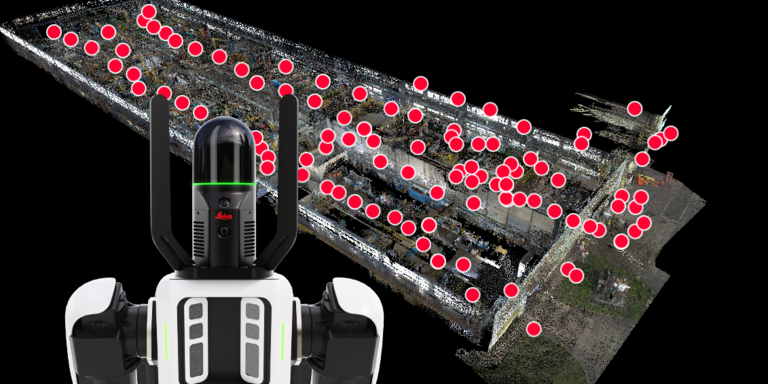What can your BLK ARC do? The flexibility of static and mobile 3D laser scanning.
The Leica BLK ARC is a powerful autonomous laser scanning module that scans in ways that you couldn’t before, and in places that were simply inaccessible. The device offers lots of flexibility, and that flexibility includes its static and mobile scanning modes: unlike most scanners where the choice is between one or the other, the BLK ARC can do both.
It is the only Leica BLK scanner capable of scanning both from static positions, and while in motion, in one seamless capture process. This provides you with two ways of capturing data from a single scanner without the need to switch modes.
Let’s dive into each scanning type, what they offer, and what they can provide when combined into one dataset.
What is static scanning?
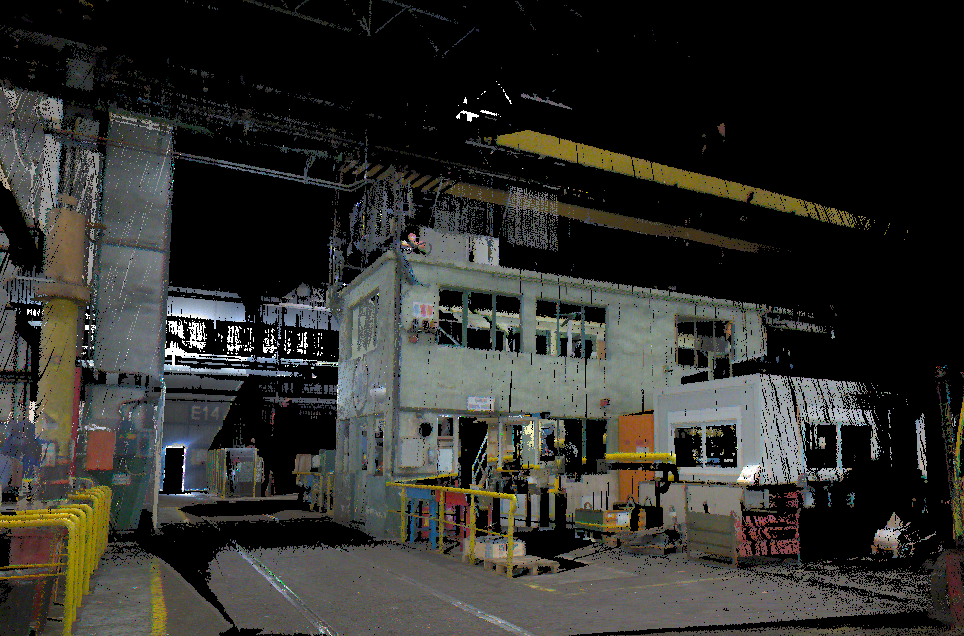
Image of a static scan setup with the BLK ARC.
Static scanning is very simple to explain. Scanners will capture from static, or still, positions. The Leica BLK360 and Leica RTC360, for example, are static scanners (also referred to as “terrestrial” or “tripod-based”). They do not move while scanning. So, each scan is captured from one static position that does not change during the scan because the scanner is mounted on a tripod. This provides very detailed data of the area you capture, and it is the most well-known method of 3D laser scanning.
Mobile scanning is different — it scans while in motion — however, in the case of the BLK ARC, the scanner can stop moving during a mobile scan. If the BLK ARC is mounted on a robotic carrier, the robot will stop and “pose” for a scan, holding a completely still position. Users can also stop moving if the BLK ARC is mounted to a manual carrier, such as a cart or trolley. Each static scan can be set to capture data for 10 seconds, 30 seconds, or 60 seconds, and the longer each static scan takes, the more data it will capture.
Detailed static scans are useful for when you need to capture more data and detail for higher accuracy in one area of your dataset and for any areas of interest that require more dense, uniform data. This is especially beneficial when you want to combine detailed static scans with a large mobile dataset. You’ll get details of areas of the dataset where you need it.
What is mobile scanning?
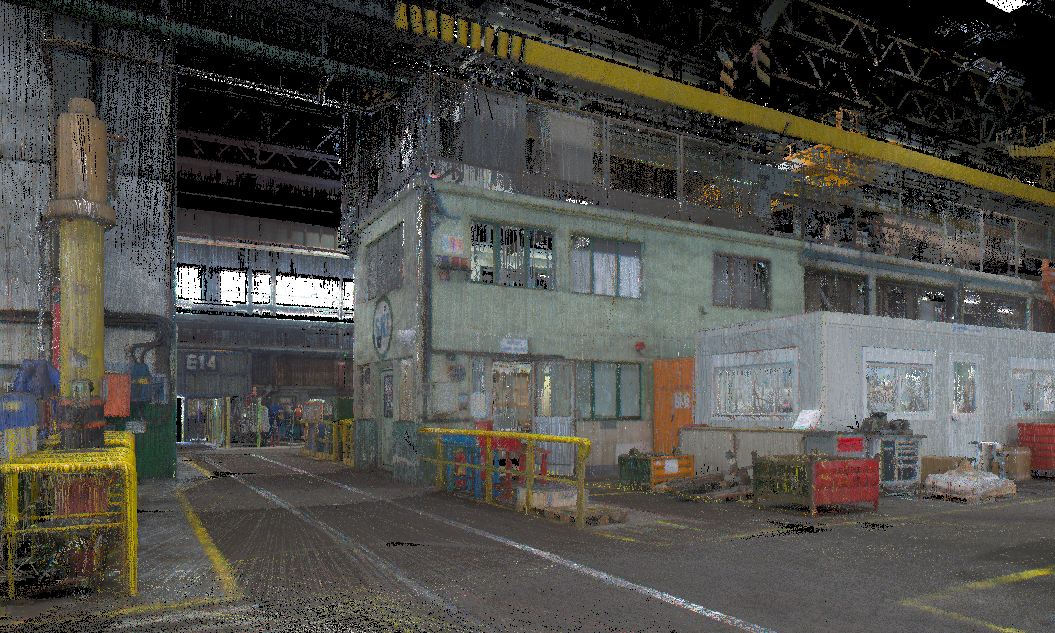
Image of a mobile (moving) scan with the BLK ARC.
Mobile scanning is exactly what it sounds like. The BLK ARC scans while in motion. This can be done while the BLK ARC is mounted on a robot, a cart or trolley, or a backpack. The BLK ARC uses GrandSLAM – a type of sensor fusion that uses LiDAR SLAM, visual SLAM, and an IMU – to calculate its position and trajectory in 3D space, orient itself, and understand how it has moved through space, thus collecting an accurate point cloud of the surrounding environment as the BLK ARC moves through it. GrandSLAM also helps the BLK ARC assist robots in navigating through an environment by providing data to the robot.
Mobile scanning with GrandSLAM happens very quickly – the scanner constantly captures 3D point clouds while in motion, building a complete dataset of the entire space it moves through. GrandSLAM provides you with a way to capture spaces quickly where you don’t need every single fine detail as you would for static scanning. And GrandSLAM is so fast that you will even see a 3D data rendering of the captured data on your device through the BLK Live app (available for iOS and Android) while it scans, which helps preview data and can be used for navigation, and provides reliability through the fusion of different sensors that back each other up.
Mobile scanning is particularly useful when less detail is needed, but accuracy is required and efficiency is paramount. Being able to move through an environment, especially large spaces, with minimal interruption allows users to collect data quickly, and the BLK ARC can even be used offline for mobile repetitive scan paths (e.g. documenting construction progress or facility changes) or remotely for hazardous environments where human operators need to stay in a safe location.
The beauty of combining static and mobile scanning in one device
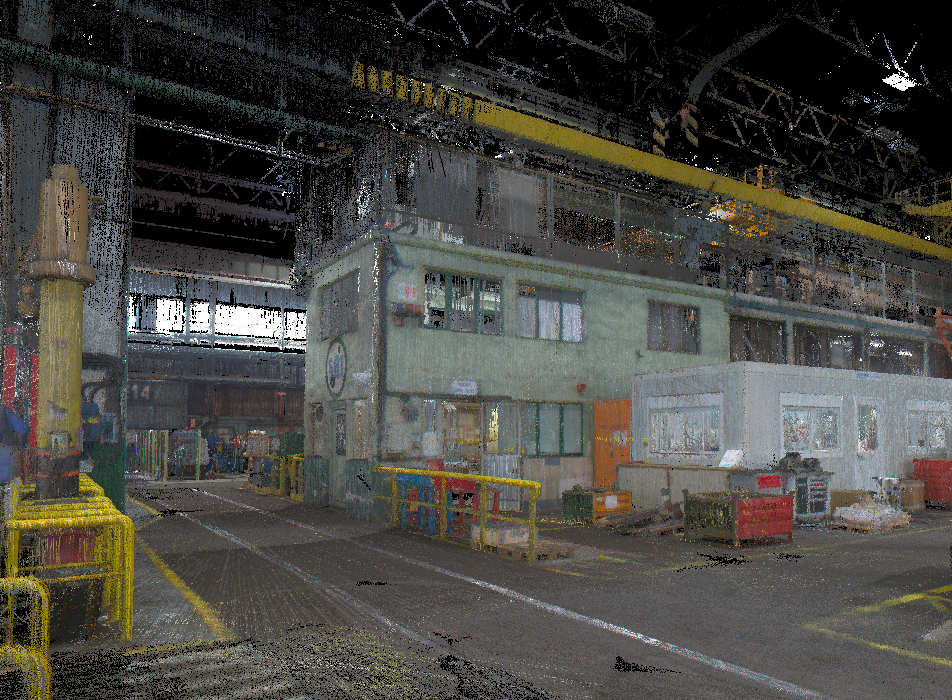
Image of combined mobile and static scans with the BLK ARC.
The beautiful thing about the BLK ARC is that you don’t have to choose just mobile scans, or just static scans. You can do both, during the same scan. You choose where to scan mobile and where to scan from a static position. You choose how often to scan from static positions. And you choose how long the BLK ARC scans from those static positions. But what should you choose, and why?
The key to answering this question is understanding what you require from your data. Do you want a high level of detail, or are you after greater efficiency? Do you need immersive visualization of data, or do you simply need to take measurements? Are you creating a detailed, 3D digital twin, or are you creating a 2D floor plan?
The great thing about the BLK ARC is that you can do all of that with one scanner. You get to choose what kind of data you capture – mobile or static, or a combination of the two – to suit your data requirements. Mobile scanning offers greater efficiency because the BLK ARC will keep moving through an environment without stopping. On the flip side, static scanning offers higher degrees of accuracy because the BLK ARC can stop, scan, and it even places “flags” or markers within the dataset to tell you exactly where the BLK ARC stopped to take a static scan. This way, when you open your data on your computer, you will see your mobile scan as one dataset – much like the BLK2GO – and you will then see individual setups where the BLK ARC stopped to take static scans. You can work with your data with the understanding of exactly where you chose to collect more data.
These scan modes complement each other, not just with the different data they deliver, but how each type of scan backs each other up in post-processing. For example, static scans will help correct drift in mobile scans. Mobile scans will provide context for static scans. Together, they provide unified datasets that combine the best of mobile and static scanning.
If you need, you can manually fine-tune registration of your static scans with your mobile dataset to ensure that all data lines up properly. Mobile scan data also works as a backup for static scans. And if you scan the same area with both static and mobile, there is a 30% range noise reduction for static scanning.
Flexibility, accuracy, and efficiency, all in one scanner
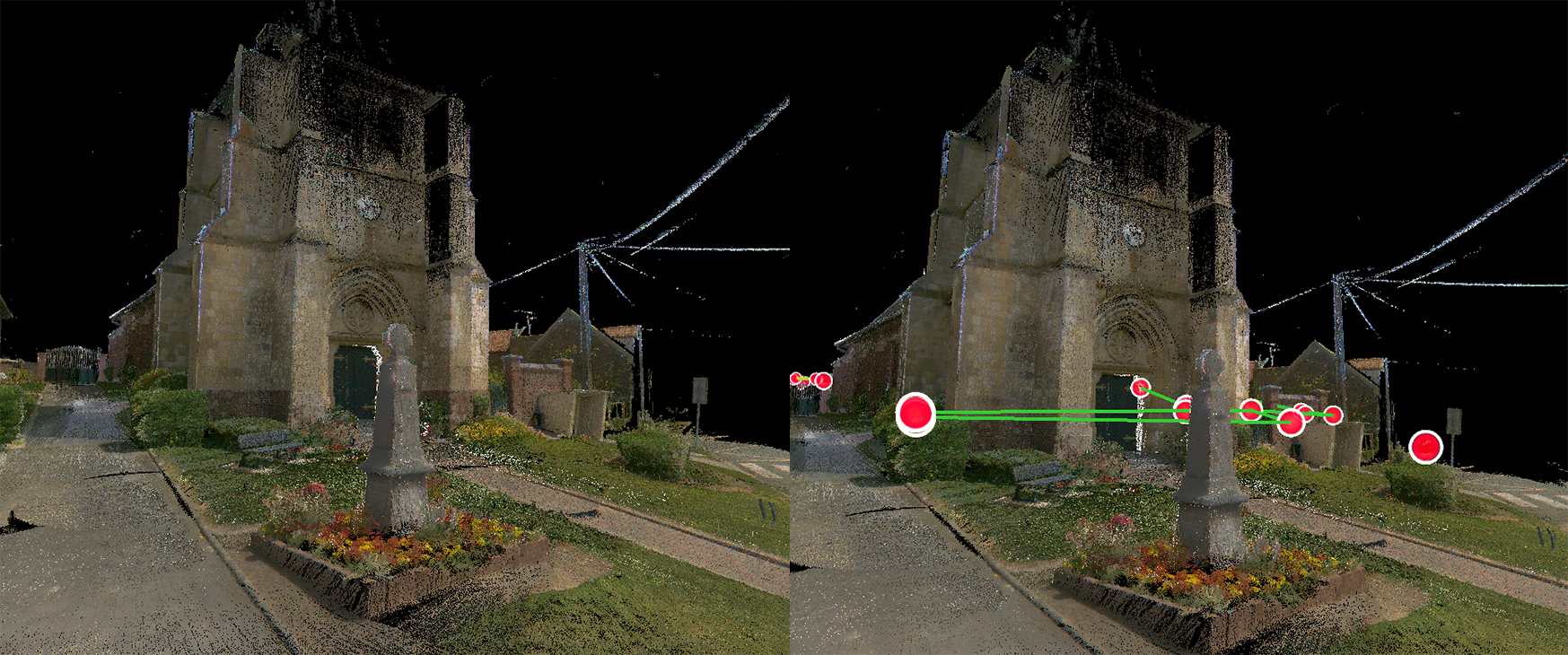
On the right, the red bubbles represent each static scan setup.
With the BLK ARC, flexibility is key. Adaptability. Versatility. The BLK ARC provides those benefits all in one package. Through its unique combination of static and mobile scanning, the BLK ARC provides a level of detail that you can trust in your data. You gain an accurate dataset that brings together the detail of static scanning and the efficiency of mobile scanning, giving you your own flexibility and versatility to suit your 3D laser scanning needs.
See the benefits for yourself. Download BLK ARC datasets here.

